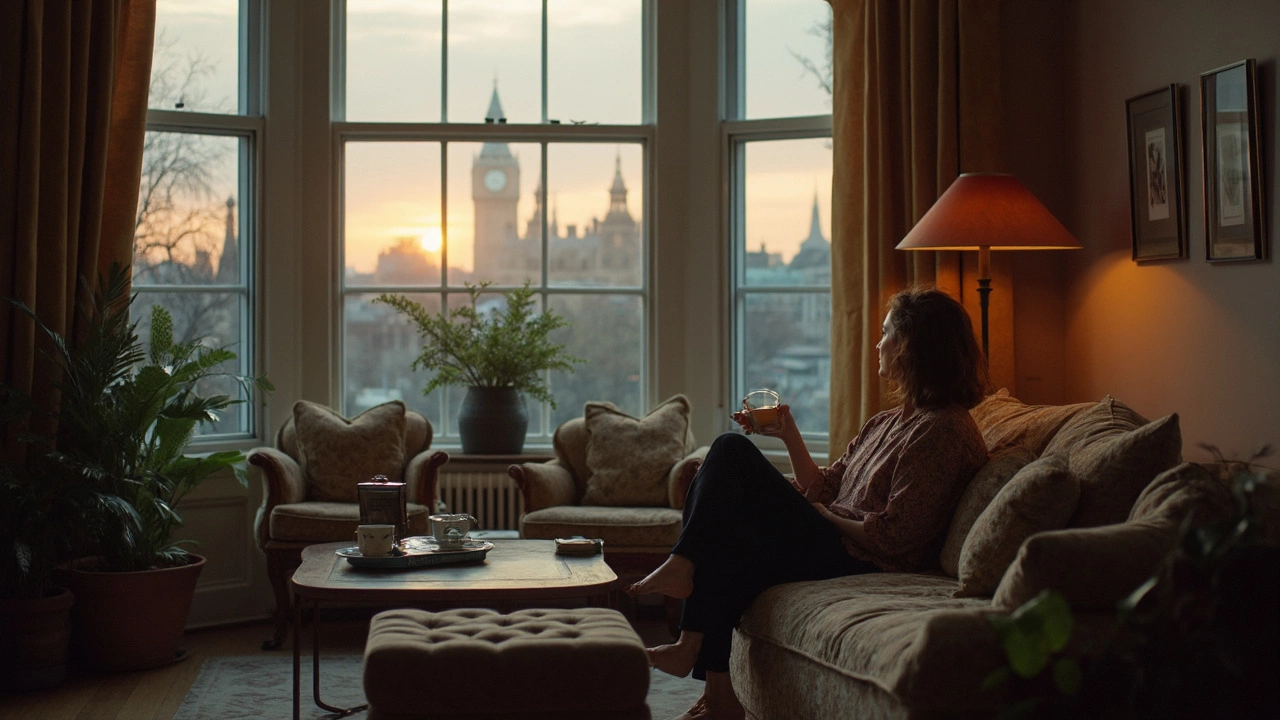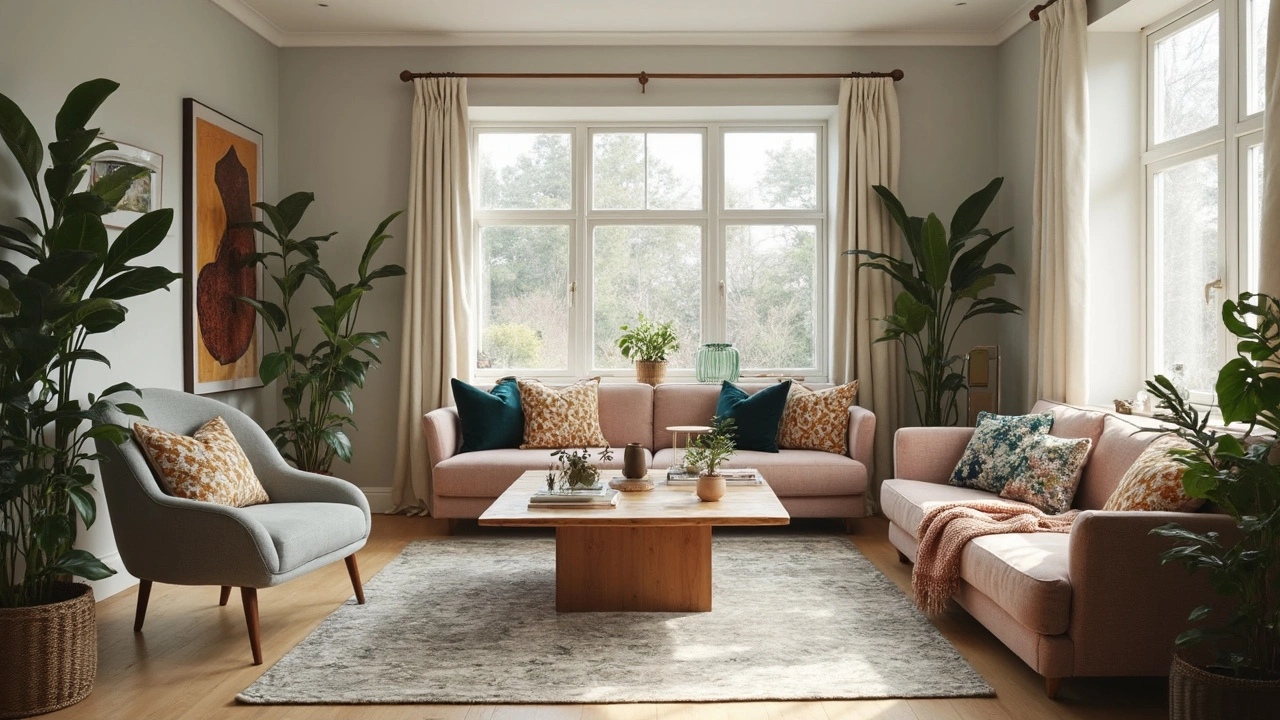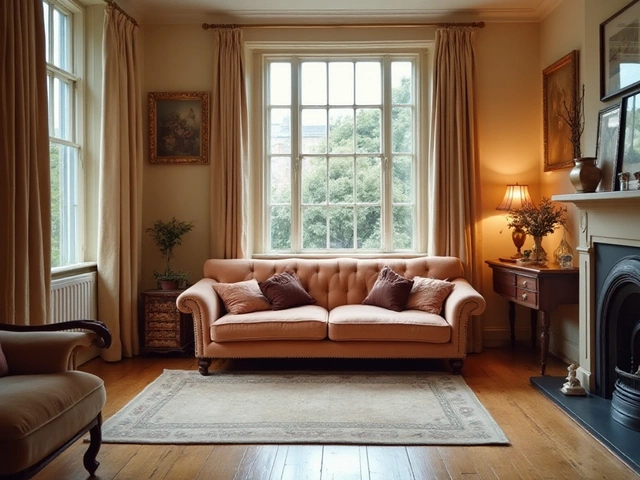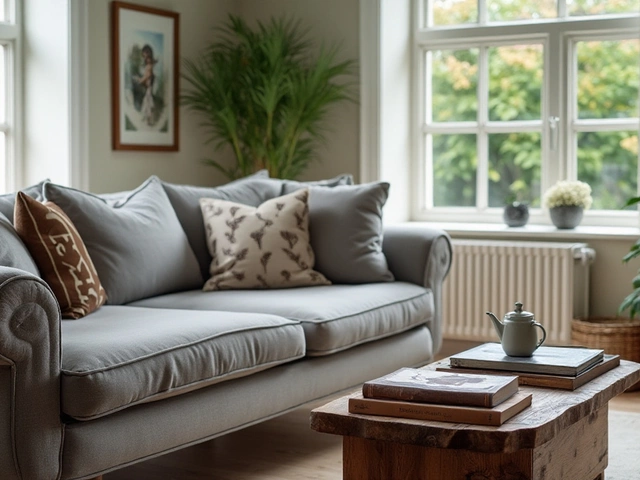Breaking news—your coffee table is not glued to the center of your living room. Loads of people put it smack dab in the middle just because that’s what everyone else does, but is that always the smart move?
If you’re tired of squeezing around corners or bumping your knees, there’s good reason to rethink that typical spot. Coffee tables actually play well just about anywhere—up against the sofa, tucked to one side, or even close to the wall if you’re tight on space. The trick is figuring out what actually makes your room work for real life, not just for photos.
Ever notice how some living rooms have a strange traffic jam right in the middle? That’s often because the coffee table shoves everyone around rather than helping people move or relax. So you’ve got more options than you might think—and a few simple tweaks can make your place feel bigger, cozier, and way more you.
- Why the Middle Isn’t Always Best
- Alternative Spots for Your Coffee Table
- Matching Table Placement With Your Lifestyle
- How to Keep the Space Balanced
- Mistakes to Avoid With Coffee Table Placement
Why the Middle Isn’t Always Best
Putting your coffee table in the center of the room sounds like the smart, go-to move, but it doesn’t always make sense for how people really use their space. Sure, it looks tidy in furniture store displays, but that's not real life. The middle can quickly become a tripping zone, especially in smaller apartments or busy family spaces.
Research from a 2023 survey on living room layouts showed that more than 60% of homeowners move their coffee table out of the exact center within the first month of redecorating. That’s because everyday life—think kids' toys, pets, or the urge to stretch your legs—rarely leaves the middle free and clear.
| Reason for Moving Table | % of Respondents |
|---|---|
| Needed more walkway space | 43% |
| Changed seating arrangement | 28% |
| Added new furniture | 18% |
| Wanted better TV view | 11% |
Another thing: not every room is shaped like a square. Open-plan homes, narrow spaces, or weird corners mean slapping that table right in the middle can make the space look awkward and cramped. Designers say it’s usually smarter to match your furniture layout to your daily routine, not just to what’s supposed to be “right.”
Here’s a quick way to tell if the ‘middle’ isn’t working for you:
- You keep stubbing your toe or doing a side shuffle to get around.
- People are always moving the table for game night or movie marathons.
- There’s an obvious path from the door to the sofa… but the table’s blocking it.
The bottom line? A coffee table placement in the center only works if it fits your room and lifestyle. When it gets in the way, it’s time to try something else.
Alternative Spots for Your Coffee Table
Who said a coffee table always has to hog the center stage? Take a good look at your living room. Sometimes, putting your table somewhere unexpected just makes the space work better. The truth is, designers have been moving coffee tables out of the middle for years—especially in smaller homes and apartments.
The most popular spot outside the center? Slide your table off to the side of your main seating. This works wonders if you have a sectional or an L-shaped couch. It creates room in front for play, pets, or just plain walking around without obstacles. Some experts even recommend putting your table right up against the arm of a sofa for extra drinks and snack space.
Another trick: use a coffee table under a window. If natural light pours through, it gives you a cool spot for plants or a stash of books. It's also pretty handy if you want to keep the pathway wide open for foot traffic.
Don’t forget about pairing your coffee table with a wall. Especially if you want a more open vibe, tuck the table near a wall with extra storage—think baskets beneath or shelves above. It’s a smart move in tighter rooms and you still get everything reachable.
"Coffee tables don’t need to be centered to be useful. It’s about making them fit your needs—not just the room’s layout." – Kelly Wearstler, award-winning interior designer
- If you usually host guests on the couch, angle the table slightly closer to where people actually sit.
- Want a kids’ play zone? Move the coffee table to an out-of-the-way spot and keep the floor open.
- Have multiple seats in a large room? Try placing two smaller tables at the ends of sofas or opposite chairs instead of just one big piece.
The key is flexibility—there are no hard and fast rules when it comes to coffee table placement. Your table should make life easier, not get in the way. Don’t be afraid to play around and see what feels right for how you actually live.

Matching Table Placement With Your Lifestyle
Your daily habits and the way you use your living space should call the shots when it comes to where the coffee table goes. If your living room doubles as a homework station, gaming zone, or snack hub, sticking the coffee table right in the middle probably makes sense—it keeps remotes, books, or snacks in easy reach from every angle.
But maybe you’re someone who rarely uses a coffee table for its "classic" purpose. Some folks find that sliding the table off to one side or closer to the wall adds more walking space and makes the room feel open. It’s especially handy if you have kids or pets zigzagging through, or if you host people often and need space for extra chairs.
Here are a few practical ways to work your coffee table placement around the way you live:
- For movie nights: Place the table within arm’s reach of your main sofa. Loading up popcorn or drinks? You want zero stretch required.
- For small-space living: Use a slim table against the sofa or float it to one side to let everyone move around easily.
- If you entertain: Try pushing the table off-center to leave more open floor for mingling or dance moves.
- If you use your living room to work: Place the table where you get natural light or next to a reading chair instead of dead center. Your back will thank you.
It helps to step back and watch how you and others actually use the room for a day or two. Sometimes, making even a minor tweak in the table’s placement saves you from future stubbed toes and cluttered traffic flow. Your room should work for you—not the other way around.
How to Keep the Space Balanced
If you move the coffee table off-center, you don’t want the whole room to feel lopsided. Keeping things looking and feeling balanced is actually easier than you’d think, but it takes a bit of tweaking. The key is making sure the room still “flows”—so nothing’s blocking walkways, and all the furniture feels like it belongs together.
Here are some ideas that work no matter the size of your room:
- Living room layout matters a lot. If the table skews to one side, try adding something on the opposite side—think a floor lamp, a basket, or a stack of books. This subtly brings balance without crowding the space.
- If you push your coffee table closer to the sofa, balance the empty area across from it. A small chair, side table, or even an ottoman can fill that spot and keep the room useful.
- Use a rug to “anchor” your bigger pieces. Make sure at least the front legs of your sofa or chairs are on the rug. This helps create one main zone, so it doesn’t feel like the coffee table’s floating on its own.
Design pros say visual weight matters as much as actual size. If your coffee table is large or dark-colored, balance it out with lighter or softer items around the room—like a light throw on the couch or pale curtains.
Here’s a trick: step back and snap a quick pic of your room. You’ll see right away if one side looks heavier or too “empty.” It’s a super easy way to spot what needs shifting. And don’t be scared to swap things around until it just feels right for you.

Mistakes to Avoid With Coffee Table Placement
Nothing ruins a living room’s flow faster than bad coffee table placement. One universal mistake? Picking a table so big or so small it just feels wrong with your other furniture. Most design specialists say the sweet spot is a coffee table that’s about two-thirds the length of your sofa and never taller than the sofa’s seat. Go for Goldilocks here—not too big, not too tiny.
Don’t fall into the trap of squeezing the table too close to the sofa. You want at least 16 inches between the edge of the couch and the table, so there’s room for legs (and avoids people doing that awkward sideways shuffle).
Another classic misstep: blocking walkways. Even if you’re tight on space, don’t box in your pathways with your coffee table. People should be able to move around the furniture without having to do obstacle courses. Designing for movement and daily use will make the whole space feel less cluttered.
Want another pro tip? Avoid making your coffee table a dumping ground. Clutter attracts more clutter. Keep out just a couple of items you actually use—maybe the remotes and one neat tray—so your living room doesn’t look like a lost-and-found pile.
According to the furniture experts at Wayfair,
“A well-placed coffee table enhances both the look and function of a room, but crowding or mismatching sizes will throw off the whole space.”It’s not just about looks; it’s about actually being able to use your space right. Make sure the main goal—easy living—comes first for your coffee table placement.
- Check the height and length in relation to your sofa.
- Leave proper space (about 16 inches) between the sofa and table.
- Don’t block walkways or doors.
- Limit coffee table clutter to essentials.
- Keep the table’s placement flexible if you host often or rearrange rooms.



